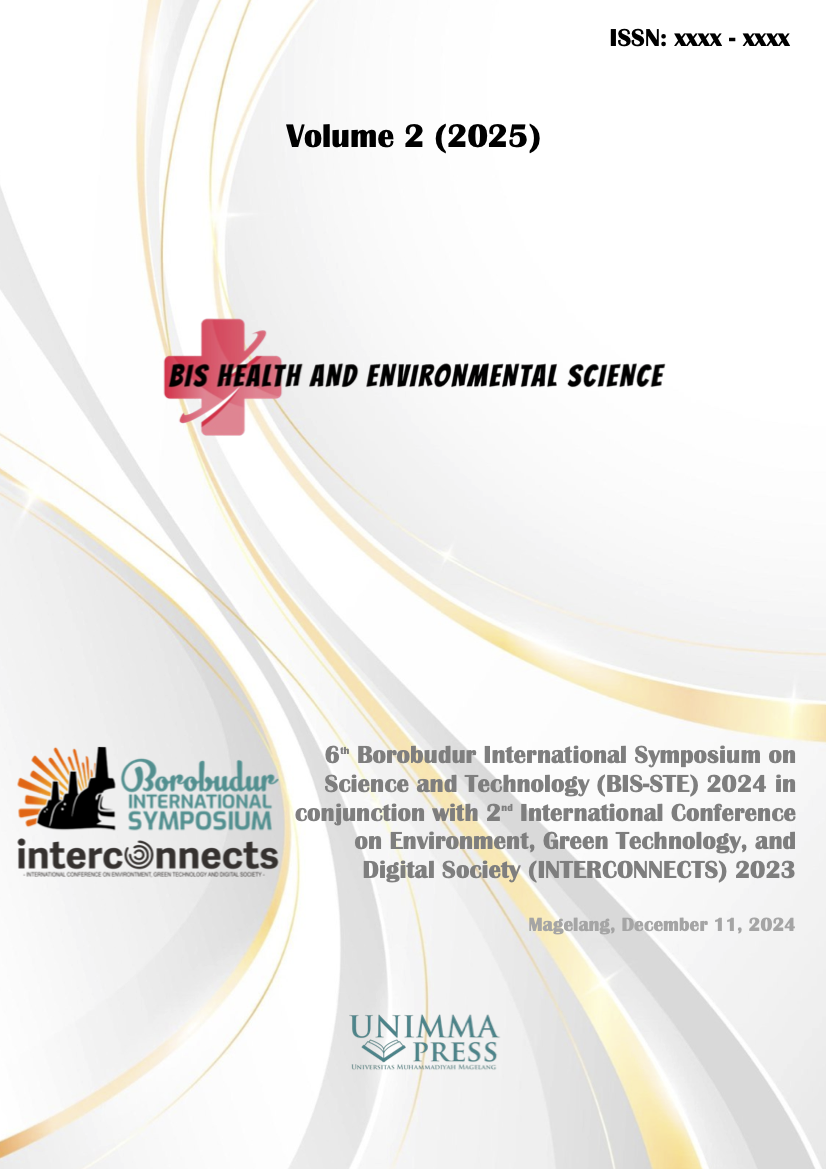Assessing and improving work postures in the manufacturing industry to mitigate musculoskeletal disorders using rapid upper limb assessment (RULA)
Keywords:
Work postures, MSDs, RULA, BiomechanicsAbstract
Manufacturing industries often encounter issues related to Musculoskeletal Disorders due to non-ergonomic work postures. This condition leads to fatigue, long-term injuries, and decreased worker productivity. Addressing poor work postures is crucial for creating a healthier and more efficient work environment. The aim of this study is to evaluate the risks of musculoskeletal disorders caused by non-ergonomic work postures in manufacturing industries and to develop effective ergonomic solutions to mitigate these risks. This study applies the Rapid Upper Limb Assessment method to assess work postures. Data on worker postures were collected, analyzed, and scored using Rapid Upper Limb Assessment to identify ergonomic risk levels and provide recommendations for posture improvements. The analysis of worker positions and movements during material lifting in manufacturing industries using the Rapid Upper Limb Assessment method resulted in a score of 7 (red), indicating the need for immediate investigation and correction. After implementing assistive device design, the final score improved to 2 (green), demonstrating that the intervention was effective in reducing Musculoskeletal Disorders and making the workers movements acceptable. The findings of this study suggest that the use of assistive devices can significantly reduce the risk of musculoskeletal disorders in workers. Ergonomic design improvements not only enhance comfort and safety but also have the potential to increase productivity and work efficiency in manufacturing industries.
References
[1] Z. G. dos Santos, L. Vieira, and G. Balbinotti, “Lean Manufacturing and Ergonomic Working Conditions in the Automotive Industry,” Procedia Manuf, vol. 3, no. Ahfe, pp. 5947–5954, 2015, doi: 10.1016/j.promfg.2015.07.687.
[2] A. Boulila, M. Ayadi, and K. Mrabet, “Ergonomics study and analysis of workstations in Tunisian mechanical manufacturing,” Hum Factors Ergon Manuf, vol. 28, no. 4, pp. 166–185, 2018, doi: 10.1002/hfm.20732.
[3] M. N. asrull Abd Rahman, M. R. ebi Abdul Rani, and J. M. ohd Rohani, “WERA: an observational tool develop to investigate the physical risk factor associated with WMSDs,” J Hum Ergol (Tokyo), vol. 40, no. 1–2, pp. 19–36, 2011.
[4] X. Li, M. Gül, and M. Al-Hussein, “An improved physical demand analysis framework based on ergonomic risk assessment tools for the manufacturing industry,” Int J Ind Ergon, vol. 70, no. May 2018, pp. 58–69, 2019, doi: 10.1016/j.ergon.2019.01.004.
[5] J. Santos, J. M. Sarriegi, N. Serrano, and J. M. Torres, “Using ergonomic software in non-repetitive manufacturing processes: A case study,” Int J Ind Ergon, vol. 37, no. 3, pp. 267–275, 2007, doi: 10.1016/j.ergon.2006.10.022.
[6] A. Schwartz et al., “Janitor ergonomics and injuries in the safe workload ergonomic exposure project (SWEEP) study,” Appl Ergon, vol. 81, no. September 2018, p. 102874, 2019, doi: 10.1016/j.apergo.2019.102874.
[7] M. T. Gajbhiye, D. Banerjee, and S. Nandi, “Postural Evaluation of Construction Labourers Engaged in Excavation Work Using Newly Developed NERPA Method and Its Validation Through REBA and WERA Methods,” in Advances in Mechanical Engineering: Select Proceedings of ICAME 2020, Springer, 2020, pp. 253–261.
[8] J. G. Brawner, G. A. Harris, and G. A. Davis, “Will the real relationship between lean and safety/ergonomics please stand up?,” Appl Ergon, vol. 100, no. December 2021, p. 103673, 2022, doi: 10.1016/j.apergo.2021.103673.
[9] R. Zorzenon, F. L. Lizarelli, and D. B. A. Daniel, “What is the potential impact of industry 4.0 on health and safety at work?,” Saf Sci, vol. 153, no. February, p. 105802, 2022, doi: 10.1016/j.ssci.2022.105802.
[10] W. Poochada, S. Chaiklieng, and S. Andajani, “Musculoskeletal Disorders among Agricultural Workers of Various Cultivation Activities in Upper Northeastern Thailand,” Safety, vol. 8, no. 3, 2022, doi: 10.3390/safety8030061.
[11] M. Sadeghi Yarandi et al., “Effectiveness of Three Ergonomic Risk Assessment Tools, Namely NERPA, RULA, and REBA, for Screening Musculoskeletal Disorders,” Archives of Hygiene Sciences, vol. 8, no. 3, pp. 188–201, 2019, doi: 10.29252/archhygsci.8.3.188.
[12] V. M. Manghisi, A. E. Uva, M. Fiorentino, V. Bevilacqua, G. F. Trotta, and G. Monno, “Real time RULA assessment using Kinect v2 sensor,” Appl Ergon, vol. 65, pp. 481–491, 2017, doi: 10.1016/j.apergo.2017.02.015.
[13] F. Ma’ruf, O. Adiyanto, and H. F. Triesnaningrum, “Analisa Biomekanika Pada Aktivitas Penyetrikaan Studi Kasus Nafiri Laundry Yogyakarta,” Jurnal Ergonomi dan K3, vol. 5, no. 1, pp. 11–19, 2020, [Online]. Available: http://jurnalergonomik3.ti.itb.ac.id/index.php/ergonomik3/article/view/61
[14] O. Adiyanto, E. Mohamad, R. Jaafar, F. Ma’ruf, M. Faishal, and A. Anggraeni, “Application of Nordic Body Map and Rapid Upper Limb Assessment for Assessing Work-related Musculoskeletal Disorders: A case study in Small and Medium Enterprises,” International Journal of Integrated Engineering, vol. 14, no. 4, pp. 10–19, 2022, doi: 10.30880/ijie.2022.14.04.002.
[15] O. Adiyanto et al., “Integrated self-report and observational risk assessment for work-related musculoskeletal disorder in small and medium enterprises,” Engineering and Applied Science Research, vol. 49, no. 1, pp. 73–80, 2022, doi: 10.14456/easr.2022.8.
[16] D. Cahyadi, A. Muis, and F. S. Etwin, “Evaluation of Work-Related Musculoskeletal Disorders in the Food Products Industry of Amplang Using NBM Questionnare and RULA Methods,” Proceedings - 2018 International Conference on Applied Science and Technology, iCAST 2018, pp. 408–411, 2018, doi: 10.1109/iCAST1.2018.8751553.
[17] M. Yusuf, N. Adiputra, I. Dewa, P. Sutjana, and K. Tirtayasa, “The Improvement of Work Posture Using RULA (Rapid Upper Limb Assessment) Analysis to Decrease Subjective Disorders of Strawberry Farmers in Bali,” International Research Journal of Engineering, IT & Scientific Research (IRJEIS), vol. 2605, no. 9, pp. 4290–2016, 2016, doi: 10.21744/irjeis.v2i9.163.
Downloads
Published
Conference Proceedings Volume
Section
License

This work is licensed under a Creative Commons Attribution-NonCommercial 4.0 International License.

